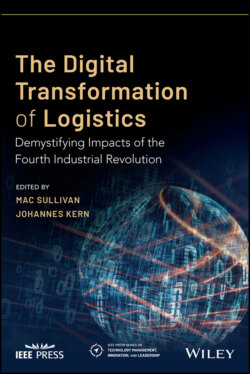Читать книгу The Digital Transformation of Logistics - Группа авторов - Страница 38
The Time Is Now
ОглавлениеChange is not coming; it is already here. Electrification opened up a vast amount of new possibilities but was only made possible by fossil fuels that power it, smart innovative businesses that monetize it and drive adoption, engineers that tinker and enhance it, and lastly supportive governments that invest in the infrastructure to support it. 4IR technologies, such as AI, are opening up newfound opportunities and need many of the same inputs to make their potential a reality (Lee 2018). As noted above, there is a flood of startups and financial investors pouring into the supply chain and logistics market. Trade and shipment data is abundant in the databases of the logistics and shipping companies, as well as the governments who collect information when doing customs clearance. While traditionally governments are more reactive, efficiency gains driven by transportation that lead to more industrial outputs are being supported. The key element that the logistics industry may be missing is the talent to tie all these pieces together.
Figure 1.4 Digitalization goals.
The 4IR is not meant to be flipping of a switch but more the tinkering and thoughtful collaboration of a network of companies, individuals, and industries that collaborate to create a new vision for the future. By creating and spreading innovative ways to coordinate the global movement of goods, logistics companies can reduce costs and reduce waste that will help to create a more sustainable way of life for all those involved. Due to customer demand, competitive risk, and socioeconomic factors, logistics companies have no choice but to embrace digital transformation. By taking steps to audit and optimize a company or even a department within a company in terms of its technological capabilities, talent pool, and processes susceptible to automation, individuals can help to future‐proof the sustainability of their company.
